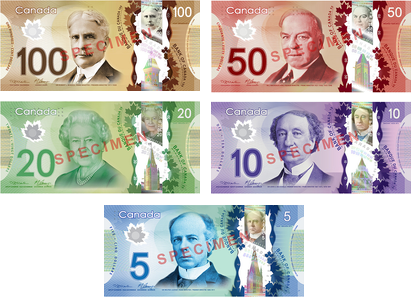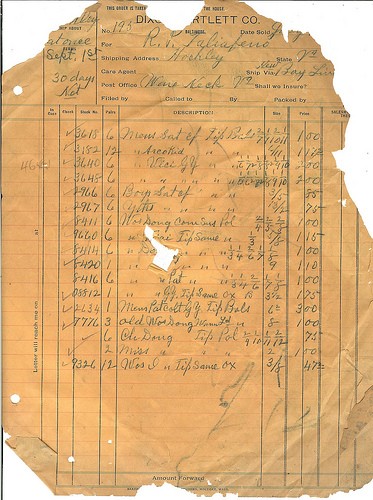Eurodollar Wikipedia the free encyclopedia
Post on: 5 Июнь, 2015 No Comment

For the currency of the European Union, see Euro .
Eurodollars are time deposits denominated in U.S. dollars at banks outside the United States. and thus are not under the jurisdiction of the Federal Reserve. Consequently, such deposits are subject to much less regulation than similar deposits within the U.S. The term was originally coined for U.S. dollars in European banks, but it expanded over the years to its present definition—a U.S. dollar-denominated deposit in Tokyo or Beijing would be likewise deemed a Eurodollar deposit. There is no connection with the euro currency or the eurozone .
Contents
§ History [ edit ]
Gradually, after World War II. the quantity of U.S. dollars outside the United States increased enormously, as a result of both the Marshall Plan and imports into the U.S. which had become the largest consumer market after World War II.
As a result, enormous sums of U.S. dollars were in the custody of foreign banks outside the United States. Some foreign countries, including the Soviet Union. also had deposits in U.S. dollars in American banks, granted by certificates. Various history myths exist for the first Eurodollar creation, or booking, but most trace back to Communist governments keeping dollar deposits abroad.
In one version, the first booking traces back to Communist China. which, in 1949, managed to move almost all of its U.S. dollars to the Soviet-owned Banque Commerciale pour l’Europe du Nord in Paris before the United States froze the remaining assets during the Korean War. [ 2 ]
In another version, the first booking traces back to the Soviet Union during the Cold War period, especially after the invasion of Hungary in 1956, as the Soviet Union feared that its deposits in North American banks would be frozen as a retaliation. It decided to move some of its holdings to the Moscow Narodny Bank. a Soviet-owned bank with a British charter. The British bank would then deposit that money in the US banks. There would be no chance of confiscating that money, because it belonged to the British bank and not directly to the Soviets. On 28 February 1957, the sum of $800,000 was transferred, creating the first eurodollars. Initially dubbed Eurbank dollars after the bank’s telex address, they eventually became known as eurodollars [ 3 ] as such deposits were at first held mostly by European banks and financial institutions. [ 3 ] A major role was played by City of London banks, as the Midland Bank. now HSBC. and their offshore holding companies .
In the mid-1950s, Eurodollar trading and its development into a dominant world currency began when the Soviet Union wanted better interest rates on their Eurodollars and convinced an Italian banking cartel to give them more interest than what could have been earned if the dollars were deposited in the U.S. The Italian bankers then had to find customers ready to borrow the Soviet dollars and pay above the U.S. legal interest-rate caps for their use, and were able to do so; thus, Eurodollars began to be used increasingly in global finance. [ 2 ]
Eurodollars can have a higher interest rate attached to them because of the fact that they are out of reach from the Federal Reserve. U.S. banks hold an account at the Fed and can, ostensibly, receive unlimited liquidity from the Fed should any trouble arise. These required reserves and Fed backing make U.S. Dollar deposits in U.S. banks inherently less risky, and Eurodollar deposits slightly more risky, which requires a slightly higher interest rate. [ 4 ]
By the end of 1970 385,000M eurodollars were booked offshore. [ 5 ] These deposits were lent on as US dollar loans to businesses in other countries where interest rates on loans were perhaps much higher in the local currency, and where the businesses were exporting to the USA and being paid in dollars, thereby avoiding foreign exchange risk on their loans.
Several factors led Eurodollars to overtake certificates of deposit (CDs) issued by U.S. banks as the primary private short-term money market instruments by the 1980s, including:
- The successive commercial deficits of the United States
- The U.S. Federal Reserve’s ceiling on domestic deposits during the high inflation of the 1970s [ 6 ]
- Eurodollar deposits were a cheaper source of funds because they were free of reserve requirements and deposit insurance assessments [ 6 ]
§ Market size [ edit ]
By December 1985 the Eurocurrency market was estimated by Morgan Guaranty bank to have a net size of 1,668B, of which 75% are likely eurodollars. [ 7 ] However, since the markets are not responsible to any government agency its growth is hard to estimate. The Eurodollar market is by a wide margin the largest source of global finance. In 1997, nearly 90% of all international loans were made this way. [ 8 ]
§ Futures contracts [ edit ]
The Eurodollar futures contract refers to the financial futures contract based upon these deposits, traded at the Chicago Mercantile Exchange (CME). More specifically, EuroDollar futures contracts are derivatives on the interest rate paid on those deposits. Eurodollars are cash settled futures contract whose price moves in response to the interest rate offered on US Dollar denominated deposits held in European banks. [ 9 ] Eurodollar futures are a way for companies and banks to lock in an interest rate today, for money it intends to borrow or lend in the future. [ 10 ] Each CME Eurodollar futures contract has a notional or face value of $1,000,000, though the leverage used in futures allows one contract to be traded with a margin of about one thousand dollars. [ 11 ]
CME Eurodollar futures prices are determined by the market’s forecast of the 3-month USD LIBOR interest rate expected to prevail on the settlement date. A price of 95.00 implies an interest rate of 100.00 — 95.00, or 5%. The settlement price of a contract is defined to be 100.00 minus the official British Bankers’ Association fixing of 3-month LIBOR on the day the contract is settled.

§ How the Eurodollar futures contract works [ edit ]
For example, if on a particular day an investor buys a single three-month contract at 95.00 (implied settlement LIBOR of 5.00%):
- if at the close of business on that day, the contract price has risen to 95.01 (implying a LIBOR decrease to 4.99%), US$25 will be paid into the investor’s margin account; or
- if at the close of business on that day, the contract price has fallen to 94.99 (implying a LIBOR increase to 5.01%), US$25 will be deducted from the investor’s margin account.
On the settlement date, the settlement price is determined by the actual LIBOR fixing for that day rather than a market-determined contract price.
§ History [ edit ]
The Eurodollar futures contract was launched in 1981, as the first cash-settled futures contract. People reportedly camped out the night before the contract’s open, flooding the pit when the CME opened the doors. That trading pit was the largest pit ever, nearly the size of a football field, and quickly became one of the most active on the trading floor, with over 1500 traders and clerks coming to work every day on what was then known as the CME’s upper trading floor. That floor is no longer, with the CME having moved over to the CBOT’s trading floor and 98% of Eurodollar trading now done electronically. [ 12 ]
§ Eurodollar futures contract as synthetic loan [ edit ]
A single Eurodollar future is similar to a forward rate agreement to borrow or lend US$1,000,000 for three months starting on the contract settlement date. Buying the contract is equivalent to lending money, and selling the contract short is equivalent to borrowing money.
Consider an investor who agreed to lend US$1,000,000 on a particular date for three months at 5.00% per annum (months are calculated on a 30/360 basis). Interest received in 3 months’ time would be US$1,000,000 × 5.00% × 90 / 360 = US$12,500.
- If the following day, the investor is able to lend money from the same start date at 5.01%, s/he would be able to earn US$1,000,000 × 5.01% × 90 / 360 = US$12,525 of interest. Since the investor only is earning US$12,500 of interest, s/he has lost US$25 as a result of interest rate moves.
- On the other hand, if the following day, the investor is able to lend money from the same start date only at 4.99%, s/he would be able to earn only US$1,000,000 × 4.99% × 90 / 360 = US$12,475 of interest. Since the investor is in fact earning US$12,500 of interest, s/he has gained US$25 as a result of interest rate moves.
This demonstrates the similarity. However, the contract is also different from a loan in several important respects:
- In an actual loan, the US$25 per basis point is earned or lost at the end of the three-month loan, not up front. That means that the profit or loss per 0.01% change in interest rate as of the start date of the loan (i.e. its present value ) is less than US$25. Moreover, the present value change per 0.01% change in interest rate is higher in low interest rate environments and lower in high interest rate environments. This is to say that an actual loan has convexity. A Eurodollar future pays US$25 per 0.01% change in interest rate no matter what the interest rate environment, which means it does not have convexity. This is one reason that Eurodollar futures are not a perfect proxy for expected interest rates. This difference can be adjusted for by reference to the implied volatility of options on Eurodollar futures.
- In an actual loan, the lender takes credit risk to a borrower. In Eurodollar futures, the principal of the loan is never disbursed, so the credit risk is only on the margin account balance. Moreover, even that risk is the risk of the clearinghouse. which is considerably lower than even unsecured single-A credit risk.
§ Other features of Eurodollar futures [ edit ]
40 quarterly expirations and 4 serial expirations are listed in the Eurodollar contract. [ 13 ] This means that on 1 January 2011, the exchange will list 40 quarterly expirations (March, June, September, December for 2011 through 2020), the exchange will also list another four serial (monthly) expirations (January, February, April, May 2011). This extends tradeable contracts over ten years, which provides an excellent picture of the shape of the yield curve. The front month contracts are among the most liquid futures contracts in the world, with liquidity decreasing for the further out contracts. Total open interest for all contracts is typically over 10 million.
The CME Eurodollar futures contract is used to hedge interest rate swaps. There is an arbitrage relationship between the interest rate swap market, the forward rate agreement market and the Eurodollar contract. CME Eurodollar futures can be traded by implementing a spread strategy among multiple contracts to take advantage of movements in the forward curve for future pricing of interest rates.














